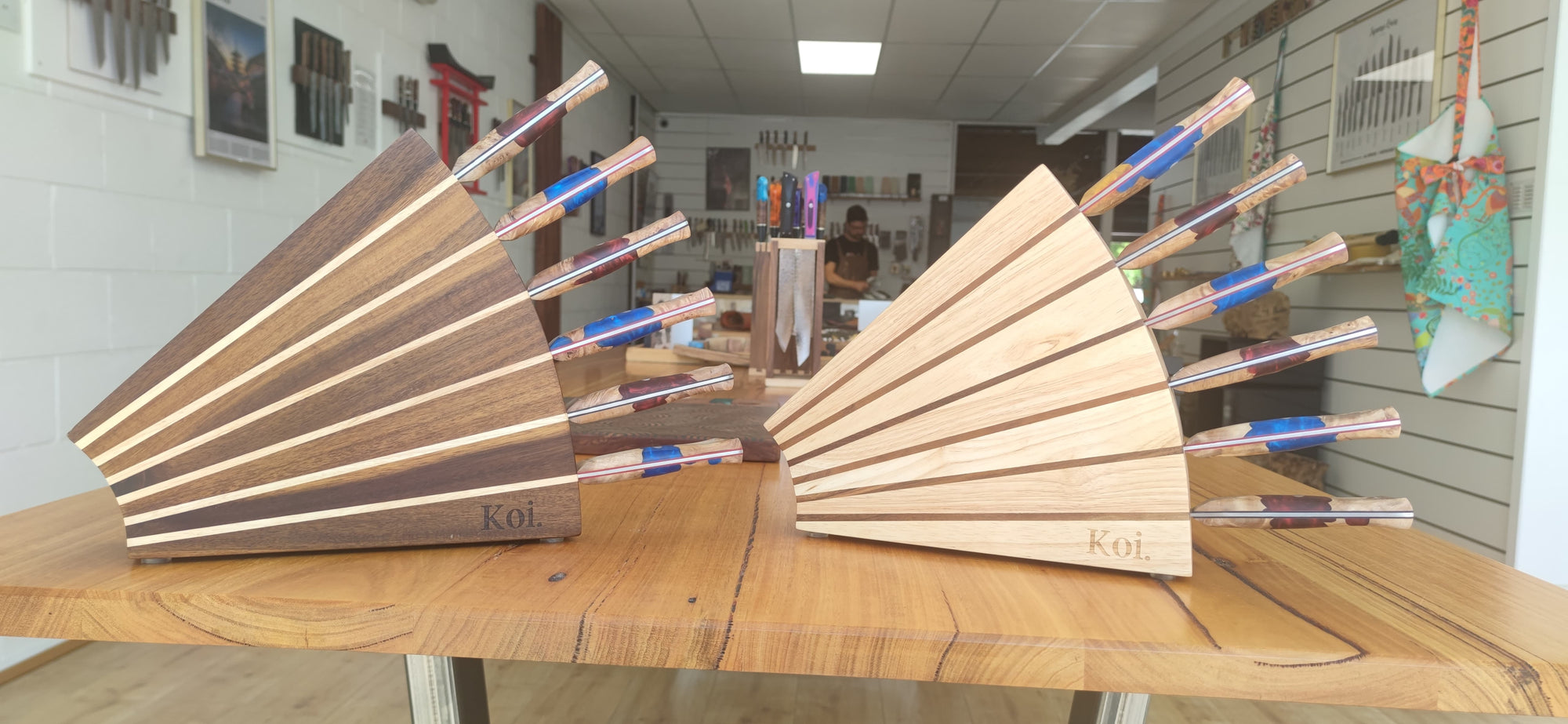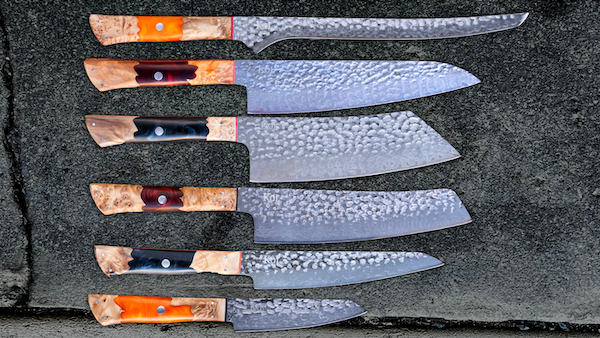While the modest knife handle is frequently overlooked by its flashier partner – the blade – your knife handle selection is critical. This is because it might stay with you for the longest time, noting that it's an important knife element.
Knife handles are classified into Japanese (Wa) and Western (Yo) handles. Most North Americans are more accustomed to the European-style riveted handle with a full or half tang (the tang goes slightly into the handle or through the handle).

Both the Wa and Yo types have a lot of functionality, and one's pick will come down to weight, functionality, and obviously, the handle's attractiveness.
Western Handles
- Full tang construction
- Usually with two or three rivets
- Heavier handle provides more stability when holding
You probably have a knife or a set with the classic three-rivet handle form. The style has been around for generations in Europe but is recently praised as a mark of quality by a renowned knife makers in Japan too.
While a thick, riveted grip may be over-engineered for a finesse blade like a Japanese kitchen knife, it's an excellent choice. They have a traditional appearance and a wonderful feel in hand, and many western chefs and restaurants are just accustomed to them. While few individuals require a utility knife with such a strong grip, many still prefer a heavier handle, including many Japanese knife designers.
Nothing rivals the sense of stability that this style provides while in use.
Some popular knives with Western handles are Sugimori, Fujiwara Maboroshi, Haruyuki Goma, and Masakage Zero.
Another significant advantage of a western handle is ergonomics. Most western-style handles are curved, which means they fit the hand better. The Masakage Zero is a striking example of the ergonomics and beauty that can be achieved with a western handle. Although this knife is crafted of great steel by a skilled blacksmith, you can bet I got it for the attractive handle. Teruyasu Fujiwara-san is yet another favourite of western handles.
View our collection of Australian Western 'Yo' handle knives.

Japanese Handles
- Hidden or Half Tang construction
- Lightweight
- Balance is in the centre the blade for more control
This is the modern North American challenger, the surprise twist that many have grown to adore. Like other parts of Japanese knives, the handles are intended for functionality and are simple yet have stunning aesthetics. Since Japanese blades lack the hefty, riveted tangs found on German knives, they can fit more smoothly into their handles, enabling the grip material to sparkle on its own. Some people are concerned that this sort of handle may break, but they'll hold up just fine unless you're driving nails into a brick. They're also considerably easier to repair if something goes wrong since they're not clamped.
These handles are notably lighter than western handles. The 'Wa' handle contains far less steel than the blade, and the knife's balance is shifted to the blade than to the handle. When you first try a Japanese knife, you are instantly smitten. The blade almost slips through the meal on its own, and you'll love it if you are the lazy type. Rather than "driving" the knife, you merely assist in doing most of the job. As a result, you learn to chop more lightly and softly. Your knife will keep sharper for longer if you use a gentler motion against the chopping board.
Japanese handles come in various wood types, each with a "collar" constructed of a denser substance, such as Pakkawood, to shield the handle's softer wood.
View our collection of Japanese 'Wa' handle knives.

Hybrids of Western and Japanese Origin
Some knife makers affix Western-style riveted knife handles to traditional Japanese kitchen blades to craft a Western-Japanese hybrid knife. This has the benefit of giving you the best of the two. The traditional Japanese kitchen knife profile is fastened to a sturdy riveted Western handle. These blends are becoming increasingly common among home chefs all over the world.
What Knife Handles Do Professionals Prefer?
Most professional chefs will choose the more popular and less expensive knife handles. The handles on Japanese kitchen knives are often not riveted in position, and therefore they need to be fixed more often if used incorrectly. If the professional uses the knife frequently, it will be more cost-effective to choose quality-made knives than to replace cheaper handles.
But if your knife is a usual home blade that does the general kitchen cooking, chances of replacing the handle are minimal. This allows you to go for the classy made handles, albeit at a high price.
Altogether, it is all about what feels comfortable in your hand and what you like the most. Most knife sets we see in stores have a range of different handles, but many knife enthusiasts prefer different sorts of handles to match different blade forms. Try western style if you want your handles big and hefty. Go Japanese if you're after a little more elegant and light handle. Having a favourite handle style limits the time you need to go through the entire selection, whether in a shop or buying online.




